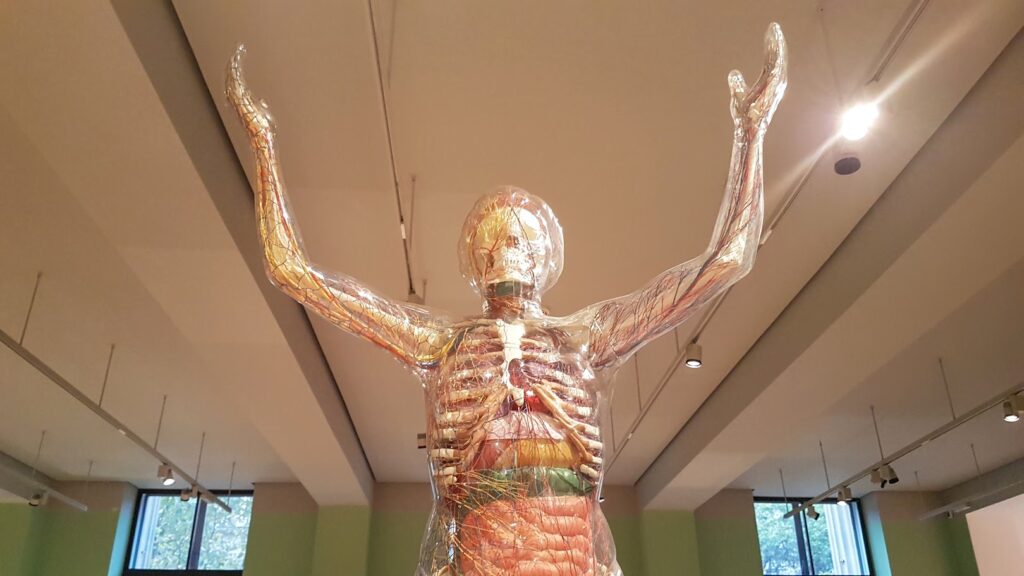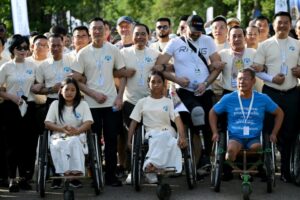New funding to explore the human genome

Science is advancing our understanding of the human body. Image by Tim Sandle (taken at the Wellcome Centre, London).
The University of Michigan is set to increase the amount and type of genetic information stored in its Trans-Omics for Precision Medicine (TOPMed) data centre. This information is used by researchers and healthcare providers around the world looking to genomes to treat disease.
The expansion has been made possible thank to a $30 million award from the U.S. National Heart, Lung, and Blood Institute. The TOPMed Informatics Research Centre at U-M will enhance the usability of the vast amounts of genetic and genomic health data, and the demands of storing it, sorting it and making it available for endless possible queries for researchers and healthcare providers.
“This award is a testament to our researchers’ significant impact in harnessing the power of genomic data for groundbreaking scientific discovery and precision health,” F. DuBois Bowman, dean of the School of Public Health explains. “This funding will enable our dedicated team to accelerate research that will improve the health and lives of people around the world.”
200,000 fully-sequenced human genomes
TOPMed’s data includes 200,000 fully-sequenced human genomes, 22 million CT scan images and other health information from 10,000-plus patients whose DNA, RNA and other biological details are made available for researching and treating diseases.
The grant specifically funds the informatics and biostatistics work behind the genomic data that is the backbone of TOPMed, which was formed 10 years ago. The centre is among the largest such genetic data collections in the world. TOPMed’s data focuses on diseases of the heart, lungs, blood and sleep disorders.
This approach allows for the capture of a complex interplay between different biological levels, providing a more holistic view of health and disease.
Seeking the genetic patterns that exist in human genomes
The goal is to generate a large volume of genomics data that has sufficient statistical power for scientific discovery. The goal is to transform TOPMed’s oceans of initially indecipherable incoming patient information into purposeful, protected data sets for researchers and healthcare providers searching for answers in the similarities, anomalies and genetic patterns that exist in human genomes. This is so that researchers, physicians and others can try to understand underlying causes of disease in some way.
Managing and protecting the ever-growing number of fully sequenced genomes and other genetic information is a mammoth undertaking. The biostatisticians design the system that finds connections and meaning behind the data and make it accessible.
Researchers and physicians can request data to further their knowledge for any number of situations: Why does immunotherapy work for some cancer patients and not others? What is the genetic material in a cancerous tumour? Which genetic mutations are triggering disease?
The patient data is anonymous and protected. The data is provided by research programs such as All for Us, The Million Veterans Program and the NIH Database of Genotypes and Phenotypes
New funding to explore the human genome
#funding #explore #human #genome





